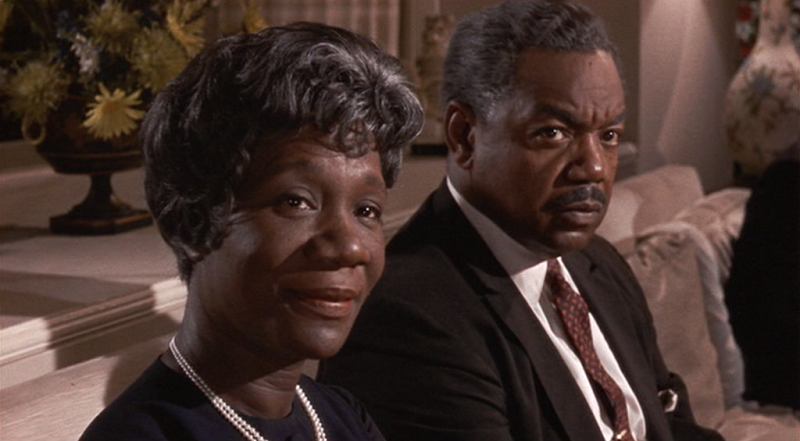The ‘String of Pearls’ (Senecio rowleyanus) is a popular succulent known for its trailing, bead-like leaves. These plants are relatively easy to care for, but they can sometimes run into issues that cause them to decline or even die. If your String of Pearls plant looks unhealthy, diagnosing the problem quickly and taking the appropriate steps to save it is essential.
Succulents are among the most loved houseplants, and the string of pearls is also one of them. Succulent enthusiasts quickly warm up to these plants because of their lustrous, green, iridescent appearance. Outdoor cultivation of this succulent is often less challenging, although problems still arise. Put another way, these beautiful succulents won’t last forever if you don’t give them the attention they need. This post will discuss the multiple issues that may occur during the string of pearls care, so if you notice a problem with your succulent, you can rest assured knowing how to solve it.
Reasons Behind the Dying Plant
Underwatering the Plant
Despite being succulent like cacti and other succulents, a string of pearls needs a little more water. If you want your pearls to appear full and healthy, give them a good soaking at least once every ten days. With proper care and watering, the string of pearl plants will develop a thin green dividing line in the middle, like “parting” curtains. Using your finger, check the soil to see if your pearl necklace seems flat, scraggly, or less plump than usual. Ensure your plant is thoroughly watered to ensure it’s dry before the evaluation. If you don’t plant your string of pearls in well-drained soil, you’ll have to deal with root rot, a separate but equally troublesome growth issue.
Not Suitable Soil Type
Your plant may not flourish because the soil is too compact. When planting in a garden centre, using well-draining soil specifically formulated for cacti and succulents is better than conventional potting soil or other options is better. Sand, regular potting soil, and perlite may be used to make your own.
Improper SunLight
The string of pearl plants requires more water than cactus but just as much sunshine as any other houseplant. If you want your pearls to thrive, give them at least six hours of indirect sunlight each day, so hang them in your brightest window. Once you checked that keeping your string of pearls in an east-facing window isn’t cutting it, you should switch it to a southern-facing window where it would get much more sunshine.
Intolerable Humidity
Despite their lush appearance, SOP house plants thrive in low humidity (about 50% is sufficient for most SOPs). Your plant’s development may be inhibited if exposed to too much moisture. This is not a plant that benefits from misting. Therefore, avoid ever allowing water to pool on the foliage of a string of pearls.
Improper Potting
A string of pearl plants may perish if you use the improper pot. These plants are generally grown in airy hanging pots, so their trailing tendrils may extend to their full length. Plastic containers, however, may trap moisture in the soil and lead to root rot. When planting, use an unglazed clay container with drainage holes to ensure the soil dries up soon. Another issue is overpotting. It can lead to degraded air circulation. Thus, being careful while potting the plant at your garden centre would be best.
Over Fertilisation
You won’t need to frequently fertilise your string of pearls since they aren’t large feeders. Regular fertiliser may be too potent for your string of pearls plant, causing root damage and, ultimately, the demise of your plant. Springtime feedings using worm castings or diluted succulent fertiliser provide the most excellent results. You may be able to salvage your plant if you act immediately and use some simple, doable measures.
Diagnosing the Problem
The first step in reviving a dying String of Pearls is carefully examining the plant and identifying the underlying issue. Here are some things to look for:
- Leaf Appearance: Look closely at the leaves. Are they shriveled and wrinkled (underwatering)? Are they soft and mushy (overwatering)? Are there any signs of pests or diseases, like spots, discolouration, or webbing?
- Stem Condition: Check the stems. Are they limp and drooping (underwatering)? Are they mushy or discoloured (overwatering or disease)?
- Soil Moisture: Stick your finger into the soil. Is it bone dry (underwatering)? Is it saturated and soggy (overwatering)?
- Pot Drainage: Examine the pot to ensure it has adequate drainage holes. Poor drainage can lead to waterlogged soil and root rot.
- Light Exposure: Evaluate the plant’s location. Is it getting enough bright, indirect light? Or is it in a spot that is too dark?
Once you’ve identified the likely cause of the problem, you can take steps to try to revive the plant.
Reviving a Dying String of PearlsAddressing Overwatering
If you suspect overwatering is the issue, the first step is to stop watering the plant immediately. Allow the soil to dry out completely before watering again. You may also want to carefully remove the plant and inspect the roots from its pot. If the roots are brown, mushy, or rotting, you’ll need to trim off any damaged portions before repotting the plant in fresh, well-draining soil.
Addressing Underwatering
The solution is to water the plant thoroughly for an underwatered String of Pearls. Soak the soil until water runs out of the drainage holes in the bottom of the pot. Be sure to empty any excess water that collects in the saucer. Continue regularly watering the plant, keeping the soil moist but not waterlogged.
Addressing Lighting Issues
If your String of Pearls isn’t getting enough light, try moving it to a brighter location. An east- or west-facing window is ideal, as these spots provide bright, indirect sunlight. Avoid placing the plant in direct, intense sunlight, which can cause problems. You can also supplement with a grow light if natural light is limited.
Addressing Pests and Diseases
You’ll need to treat the plant with an appropriate insecticide or organic pest control method for pest infestations. Be sure to inspect the plant and treat any visible pests thoroughly. For fungal diseases, you may need to use a fungicide. Carefully follow the product instructions and monitor the plant closely.
Addressing Transplant Shock
If your String of Pearls was recently transplanted, the plant may be undergoing a period of adjustment. Be patient and continue to care for the plant as you normally would. Avoid further disturbing the roots, and ensure the plant gets the right water and light. With time, the plant should recover.
Read more: Navigating Love in the Digital Age: Tips for Modern Women
Ongoing Care for a Revived String of Pearls
Once you’ve addressed the underlying issue and the plant shows signs of recovery, you must continue providing proper care to keep it healthy. Here are some tips:
Watering:
- Water your String of Pearls when the top inch or two of soil becomes dry.
- Stick your finger into the soil to check.
- Avoid letting the soil stay completely dry for extended periods, but don’t let it become waterlogged.
Lighting: Aim to provide your String of Pearls with bright, indirect sunlight for at least 6 hours daily. An east- or west-facing window is ideal. Supplement with a grow light if needed.
Soil: Use a well-draining, sandy potting mix specifically formulated for succulents and cacti. Avoid heavy, dense soils that can hold too much moisture.
Pot Size: A string of Pearls prefers to be slightly root-bound. Choose a pot that is only slightly larger than the root ball. Repot every 2-3 years in the spring.
Pruning: Regularly trim off dead, damaged, or dying leaves and stems to encourage new growth and keep the plant tidy.
Humidity: String of Pearls prefer low to moderate humidity levels. Avoid placing the plant in very humid environments.
Fertilizer: Feed your String of Pearls with a diluted succulent or cactus fertilizer every 2-3 months during the growing season. With the proper care and attention, a revived String of Pearls can bounce back and thrive again. Be patient, as the plant may take some time to recover fully. Regularly monitor its progress and make adjustments as needed.
The Bottom Line
We hope this information is helpful for you and that you understand what to do while doing a string of pearls care. It would be best if you remembered that this is not the easiest growing plant; however, you can get the desired results with proper care.
Read more: Fashion Open Studio Presents Showcase With A Difference




